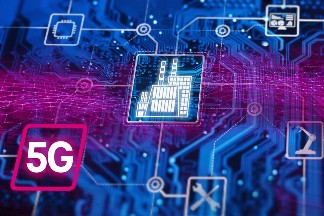
5G’s mobility support for IoT (Internet of Things) devices is a critical aspect of the network’s ability to manage a vast array of connected devices, ranging from low-power sensors to more complex systems like connected vehicles.
The unique requirements of IoT—such as low power consumption, extended coverage, and reliable connectivity—are addressed through specific 5G technologies and features. Here’s a detailed overview:








1. Massive IoT Connectivity
Support for Massive Numbers of Devices:
5G is designed to support a massive number of IoT devices, up to 1 million devices per square kilometer. This capability is essential for applications like smart cities, where sensors, meters, and other IoT devices are densely deployed.
Scalable Network Architecture:
5G’s scalable architecture allows the network to efficiently handle the varying demands of IoT devices, from simple sensors with low data rates to more sophisticated devices requiring higher bandwidth.
2. Low-Power Wide-Area (LPWA) Technologies
Narrowband IoT (NB-IoT):
NB-IoT is a 3GPP standardized LPWA technology that operates on a narrow frequency band and is optimized for devices that require low data rates and extended battery life. It is ideal for applications like smart metering, asset tracking, and environmental monitoring.
Supports long battery life (up to 10 years) and deep indoor penetration, making it suitable for devices in remote or challenging locations.
LTE-M (Long Term Evolution for Machines):
LTE-M is another LPWA technology that provides higher data rates than NB-IoT and supports mobility. It is well-suited for use cases like connected wearables, smart logistics, and fleet management.
Supports voice services, low latency, and enhanced mobility, making it suitable for IoT applications that require real-time communication and movement tracking.
3. Enhanced Mobility Management for IoT
Optimized Handover Mechanisms:
5G introduces optimized handover techniques for IoT devices, ensuring seamless connectivity as devices move between cells or networks. This is crucial for mobile IoT applications, such as connected vehicles and asset tracking.
Mobility State Awareness: The network can differentiate between stationary and mobile IoT devices, applying different mobility management strategies to optimize performance and reduce unnecessary signaling.
Extended Discontinuous Reception (eDRX):
eDRX allows IoT devices to extend the intervals between checking for network messages, significantly reducing power consumption while maintaining connectivity. This is particularly useful for battery-operated devices that need to conserve energy while remaining mobile.
Power Saving Mode (PSM):
PSM enables IoT devices to enter a deep sleep state for extended periods while maintaining their registered status on the network. This mode is beneficial for devices that only need to transmit data intermittently, such as environmental sensors.
4. Support for Ultra-Reliable Low-Latency Communication (URLLC)
Critical IoT Applications:
5G’s URLLC capabilities are essential for IoT applications that require high reliability and low latency, such as industrial automation, remote surgery, and autonomous driving.
The network ensures that data from critical IoT devices is prioritized, reducing the risk of communication delays or failures, even as devices move.
5. Network Slicing for IoT
Dedicated Network Slices:
5G supports network slicing, which allows the creation of dedicated virtual networks optimized for specific IoT use cases. For example, one slice could be configured for low-power sensors, while another is designed for high-mobility IoT devices like connected vehicles.
Each slice can be customized for specific requirements, such as latency, bandwidth, and reliability, ensuring that IoT devices receive the appropriate level of service.
6. Edge Computing Integration
Local Data Processing:
By integrating edge computing with 5G, data from IoT devices can be processed closer to the source, reducing latency and improving response times. This is particularly important for IoT applications that require real-time processing, such as smart manufacturing and autonomous systems.
Mobility Support at the Edge:
As IoT devices move, edge computing resources can be dynamically re-allocated to follow the device, ensuring consistent performance and minimizing latency.
7. Security and Privacy for IoT Mobility
Enhanced Security Protocols:
5G introduces stronger security protocols to protect IoT devices as they move between networks or communicate with different parts of the network. This includes enhanced encryption, authentication, and privacy measures to prevent unauthorized access and data breaches.
IoT Device Identification:
The network can securely identify and authenticate IoT devices, ensuring that only authorized devices can connect and transmit data, even as they move.
8. Mobility Support for Different IoT Use Cases
Connected Vehicles:
5G’s support for high mobility and low latency is critical for connected vehicles, enabling vehicle-to-everything (V2X) communication. This includes vehicle-to-vehicle (V2V), vehicle-to-infrastructure (V2I), and vehicle-to-network (V2N) communication, essential for autonomous driving and traffic management.
Smart Logistics and Asset Tracking:
IoT devices used in logistics, such as cargo tracking devices, benefit from 5G’s extensive coverage and mobility support, ensuring continuous monitoring and real-time updates as goods move across regions.
Wearables and Health Monitoring:
Wearable devices that monitor health and fitness can maintain connectivity as users move, providing real-time data to healthcare providers. 5G’s low power and high mobility support are essential for ensuring these devices are both efficient and reliable.
9. AI and Machine Learning for IoT Mobility
Predictive Mobility Management:
AI and machine learning can be used to predict the movement patterns of IoT devices, allowing the network to preemptively optimize connectivity and handovers. This reduces latency and ensures reliable performance, particularly for high-mobility IoT applications.
Adaptive Resource Allocation:
AI-driven algorithms can dynamically allocate network resources based on real-time mobility patterns, ensuring that IoT devices receive the necessary bandwidth and low latency as they move.
10. Scalability and Flexibility
Adaptation to Various Mobility Scenarios:
5G’s flexible architecture allows it to adapt to different mobility scenarios, from stationary sensors in smart cities to fast-moving vehicles on highways. This ensures that IoT devices remain connected and functional in diverse environments.
Seamless Integration with Other Networks:
5G is designed to integrate seamlessly with other networks, such as Wi-Fi and satellite, providing continuous connectivity for IoT devices even in areas with limited 5G coverage.
In summary, 5G’s mobility support for IoT devices is comprehensive, addressing the unique challenges posed by the diverse range of IoT applications. Through advanced handover mechanisms, low-power technologies, network slicing, and edge computing integration, 5G ensures that IoT devices remain connected, efficient, and secure, regardless of their mobility patterns. This enables a wide range of innovative applications, from smart cities and connected vehicles to industrial automation and beyond.

Leave a Reply